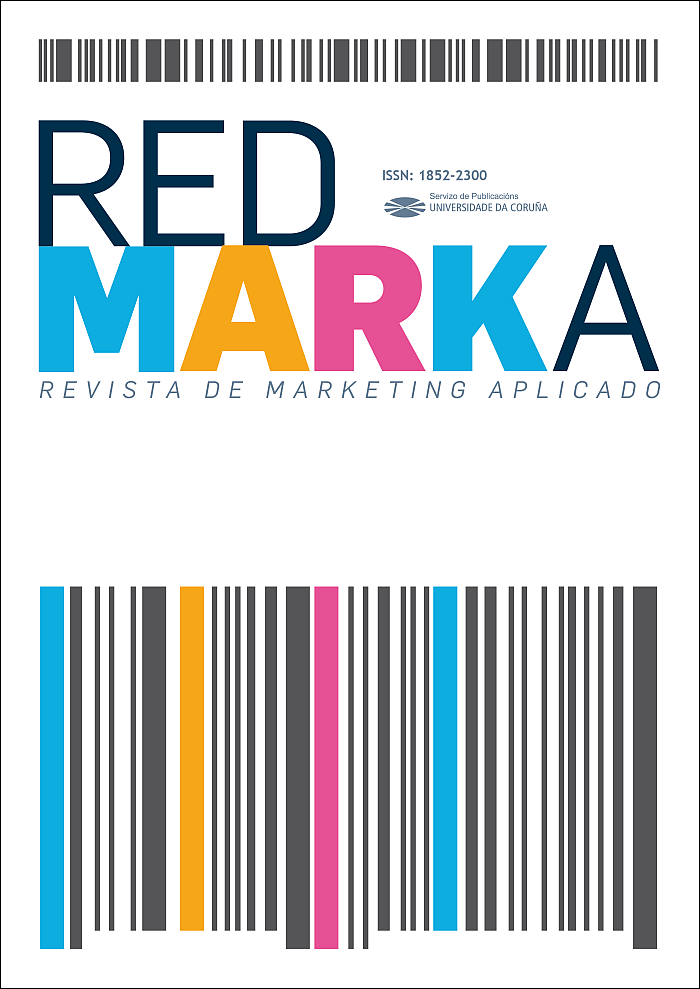Design trends in visual identity in the automotive industry: nostalgia for the past and the challenge of an electric future
Main Article Content
Abstract
The uncertainty generated by the transition to electric cars and the concentration of car brands under single manufacturing groups have forced car brands to redefine their identity. In doing so, some have opted to focus on their heritage as a way to set themselves apart from others and strengthen a perception of authenticity. The main aim of this study is to confirm the existence of a retro trend in the automotive sector and to examine how that trend is reflected in the visual identity of the brands. The study consisted of a diachronic study of the main brands in the Spanish market and a content analysis of the graphical features of their visual identity. The results show a general trend towards formal simplicity, reflecting the interest of the brands in projecting an image of cleanliness and simplicity consistent with the new energy sources, and an invocation of the past by some brands in their latest restylings.
Keywords:
Downloads
Article Details
References
Aaker, D. (1996). Construir marcas poderosas. Gestión 2000.
Álvarez, S. (2016). El renacer de MINI, de la mano de BMW: 15 años de historia, foto a foto. Diario Motor. https://www.diariomotor.com/foto-a-foto/mini-bmw-historia/
ANFAC. (2021). Informe Anual 2020. https://anfac.com/wp-content/uploads/2021/07/Informe-Anual-ANFAC-2020.pdf
Auto Bild. (2021). Renault 5. https://www.autobild.es/coches/renault/5-47433
BMW. (2020). Cómo surgió el logotipo de BMW. https://www.bmw.es/es/topics/mundo-bmw/cultura-bmw/noticias/exclusividad/historia-logotipo.html
Baschiera, S., y Caoduro, E. (2015). Retro, faux-vintage, and anachronism: When cinema looks back at Its Analogue Past. NECSUS European Journal of Media Studies, 4(2), 143-163. https://doi.org/10.5117/NECSUS2015.2.BASC
Berelson B. (1952). Content Analysis in Communication Research. Glencoe. Free Press.
Bermejo Blas, A. y Montes Vozmediano, M. (2015). Análisis de la identidad visual de las empresas en el sector de la fotografía digital. Revista Mediterránea de Comunicación, 6(2), 181-194. https://doi.org/10.14198/MEDCOM2015.6.2.09
Bertola Garbellini, A. y Martín Ramallal, P. (2021). Fragmentación y liquidez del logotipo. Un modelo taxonómico para el estudio de identidades visuales dinámicas desde la técnica hasta su tipología. En Sánchez-Gey Valenzuela, N. y Cárdenas Rica, M. L. (coords.) La comunicación a la vanguardia. Tendencias, métodos y perspectivas (1ª ed., pp. 897-935). Fragua.
Brown, S. (1999). Retro-marketing: yesterday's tomorrows, today! Marketing Intelligence & Planning, 17(7), 363-376. https://doi.org/10.1108/02634509910301098
Campi i Valls, I. (2007). Diseño y nostalgia. El consumo de la historia. Santa & Cole.
Cancela, C. (2021). La incertidumbre sobre el futuro del automóvil también afecta a los fabricantes. El Confidencial. https://www.elconfidencial.com/motor/2021-04-08/incertidumbre-tecnologia-automocion_3023315/
Chaves, N. (2015). La marca: señal, nombre, identidad y blasón. EME Experimental Illustration, Art & Design, 3, 40-49. https://doi.org/10.4995/eme.2015.3432
Citroën. (2021). Patrocinios y asociaciones. https://www.citroen.es/universo-citroen/patrocinios-y-asociaciones/ag2r-citroen-team.html
Comisión Europea (2021). European Green Deal: Commission proposes transformation of EU economy and society to meet climate ambitions. https://ec.europa.eu/commission/presscorner/detail/en/IP_21_3541
Conraths, H. (s.f.). The creation of the FIAT logo 1968 – a landmark in the perception of a visual industrial identity. http://www.armin-vogt.ch/fileadmin/images/downloads/TheCreationOfTheFIAT-Logo1968.pdf
Fernández Rincón, A. R. (2019). El legado de la Bauhaus en la identidad visual gráfica de las organizaciones: ideología de lo plano y "flat design". Pensar la Publicidad. Revista Internacional de Investigaciones Publicitarias, (13), 65-85. https://doi.org/10.5209/pepu.65020
Fiat. (2021). 120 aniversario. https://www.fiat.es/120-aniversario-hitos
García, M. (2017). ¿Por qué los logos de coches se están volviendo planos? Brandemia. https://brandemia.org/por-que-los-logos-de-coches-se-estan-volviendo-planos
Giménez, P. (2020). Alpine A110, a prueba. ¡Regreso triunfal! Diario Motor. https://www.diariomotor.com/noticia/prueba-alpine-a110/
Guffey, E. (2006). Retro: The culture of revival. Foci.
Kerlinger, F. N. (1986). Foundations of behavioral research. Holt, Rinehart and Winston.
Krippendorff, K. (1990). Metodología de análisis de contenido. Teoría y práctica. Paidós.
López, F. (2015). Fiat 500, todo un éxito de ventas: más de un millón y medio de unidades fabricadas. Motor.es. https://www.motor.es/noticias/fiat-500-exito-ventas-201524180.html
López, N. (2021). Jaguar e-Type 60, así es la versión exclusiva que se vende por parejas. Auto Bild. https://www.autobild.es/noticias/jaguar-type-60-version-exclusiva-vende-parejas-829109
Mecacci A. (2018). Kitsch y Neokitsch. Boletín de Estética, (44), 7-32. http://www.boletindeestetica.com.ar/index.php/boletin/article/view/30
Mecacci, A. (2016). Aesthetics of Fake. An Overview. Aisthesis. Pratiche, linguaggi e saperi dell’estetico, 9(2), 59-69. https://doi.org/10.13128/Aisthesis-19416
Moles, A. (1991). La imagen: comunicación funcional. Trillas.
Moreno, S. (2021). Qué marcas venderán solo coches eléctricos antes de 2035. La Vanguardia. https://www.lavanguardia.com/motor/actualidad/20210716/7603613/que-marcas-venderan-coches-electricos-antes-2035-europa.html
Norman, D. A. (2005). El diseño emocional. Por qué nos gustan (o no) los objetos cotidianos. Paidós.
Ortiz, R. (2016). La historia del coche más cool. La Vanguardia. https://www.lavanguardia.com/motor/coches-bonitos/20160716/403258746748/mini-historia-anos-15-coches-bonitos.html
Piñuel Raigada, J. L. (1998). Abraham A. Moles (1920-1992) y la Teoría de la Información. CIC: Cuadernos de Información y Comunicación, (4), 157-198. https://revistas.ucm.es/index.php/CIYC/article/view/CIYC9899110157A
Salvador Rivero, A. y Montes Vozmediano, M. (2016). La identidad visual del lujo en España. Prisma Social, (17), 1-23. https://www.redalyc.org/articulo.oa?id=353749552001
Sant, M. (2021, 13 de abril). ¿Por qué los coches modernos son tan feos? [video]. YouTube. https://www.youtube.com/watch?v=b9RJ_PCzajQ&t=1170s
Solera, I. (2015). Logos de coches: Fiat y los continuos cambios. Motorpasión. https://www.motorpasion.com/fiat/logos-de-coches-fiat-y-los-continuos-cambios
Villafañe, J. (1999). La gestión profesional de la imagen corporativa. Pirámide.
Wimmer, R. D. y Dominick, J. R. (1996). La investigación científica de los medios de comunicación. Una introducción a sus métodos. Bosch Comunicación.
Zurutuza, C. (2012). Técnicas de investigación social en comunicación. En Zugasti Azagra, R. (coord.), Investigar en ciencias sociales: el estudio de la comunicación (1ª ed., pp. 101-121). Ediciones Universidad San Jorge.







